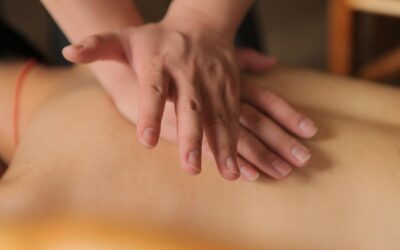In this comprehensive guide, we will explore the causes of shoulder tension and its impact on the body. We will delve into the benefits of massage therapy for shoulder tension, discussing various massage techniques that can effectively alleviate pain and promote relaxation. Additionally, we will provide practical tips and exercises that can complement massage therapy in managing shoulder tension.
Understanding Shoulder Tension
Shoulder tension is often caused by a combination of factors, including poor posture, repetitive tasks, stress, and anxiety. When we experience stress, our bodies tend to hold onto tension, manifesting in the upper back, shoulders, and neck. This results in tight muscles and discomfort.
One common contributor to shoulder tension is poor posture. Spending long hours sitting at a desk or engaging in activities that involve arms raised above the head can cause the body to slump forward, placing pressure on the back and neck muscles. By maintaining proper posture, we can reduce the likelihood of developing shoulder tension.
Repetitive tasks, such as prolonged typing or engaging in activities that require steady arm and shoulder movements, can also lead to shoulder tension. These repetitive motions can cause the shoulder muscles to become tight and restrictive over time, resulting in pain and discomfort.
Benefits of Massage Therapy for Shoulder Tension
Massage therapy offers numerous benefits for individuals experiencing shoulder tension. By targeting the muscles in the shoulder region, massage therapy can alleviate pain, reduce muscle tightness, and promote relaxation. Let’s explore the various techniques used in shoulder massage and how they can provide relief.
Acupressure: Unlocking Tension Points
Acupressure is a technique commonly used in shoulder massage to increase blood flow to the shoulder muscles. By applying pressure to trigger points and muscular knots, acupressure helps break down adhesions and promote healing. This increase in blood flow delivers essential oxygen and nutrients to the muscles, aiding in pain relief and muscle relaxation.
Kneading: Loosening Tightness
Kneading is another effective technique used in shoulder massage to alleviate tension and stiffness. This technique involves applying pressure and manipulating the soft tissues. By slowly squeezing and pulling the muscles, kneading improves blood and lymph flow, increases muscle temperature, and enhances muscle elasticity. These effects contribute to a decrease in muscle pain, tightness, and tension.
Effleurage: Enhancing Circulation and Relaxation
Effleurage is a gentle stroking technique used in shoulder massage to improve circulation and promote relaxation. By rubbing the skin, this technique increases the temperature of the muscles and enhances blood flow. The friction created during effleurage also aids in the removal of waste products and toxins, contributing to improved muscle health.
Skin Rolling: Relieving Stress and Tension
Skin rolling is a technique that involves picking up and rolling the skin between the fingers and thumbs. This method helps relieve stress and tension within the muscles, enhancing blood and lymph flow. By improving circulation, skin rolling facilitates the removal of waste products and toxins, promoting overall muscle health and relaxation.
Trigger Point Therapy: Releasing Knots and Reducing Pain
Trigger point therapy targets specific trigger points within the muscles to release knots and reduce pain. These knots, known as trigger points, can cause pain and discomfort when left untreated. By applying pressure to these points, trigger point therapy promotes the breakdown of muscle adhesions, increases blood flow, and provides pain relief.
When Can a Shoulder Massage Help?
A shoulder massage can be beneficial in various situations, offering relief and promoting overall well-being. Let’s explore some common scenarios where a shoulder massage can help:
Relaxation: Unwinding the Body and Mind
A shoulder massage is an excellent way to encourage relaxation. The gentle strokes and soothing techniques used in a shoulder massage can relax the body physically and mentally. By increasing the production of relaxation hormones such as serotonin and dopamine, a shoulder massage helps calm the mind and reduce stress. Additionally, the decrease in cortisol levels, a stress hormone, further contributes to a state of deep relaxation.
Stress Relief: Easing Tension and Anxiety
Stress can manifest in the body in the form of tense muscles, particularly in the shoulders. A shoulder massage can effectively alleviate stress by reducing muscle tension and promoting relaxation. By targeting the tight muscles, a shoulder massage helps release built-up stress and anxiety, allowing the body and mind to unwind.
Muscle Tightness: Easing Discomfort and Pain
Tight muscles in the shoulders can cause significant discomfort and restrict range of motion. A shoulder massage can help decrease muscle tightness by increasing muscle temperature and improving tissue elasticity. With improved elasticity and flexibility, the muscles become more relaxed, resulting in decreased pain and tension.
Injury Recovery: Enhancing Healing and Functionality
After an injury, muscles often become tight and restrictive, leading to increased pain. A shoulder massage can aid in injury recovery by easing tension, stress, and pain. By breaking down scar tissue and increasing blood flow to the affected area, a shoulder massage promotes healing and improves muscle function. The increase in oxygen and nutrients delivered to the muscles supports their overall health and strength.
Practical Tips and Exercises for Managing Shoulder Tension
In addition to receiving regular shoulder massages, incorporating practical tips and exercises into your routine can help manage shoulder tension. Here are some recommendations to complement massage therapy:
Posture Awareness: Sitting and Standing Tall
Maintaining proper posture throughout the day can significantly reduce shoulder tension. Whether sitting at a desk or standing, be mindful of your posture. Sit upright, keeping your back straight and shoulders relaxed. Avoid slumping forward or hunching your shoulders. When standing, distribute your weight evenly and engage your core muscles to support your spine.
Stretching Routine: Relieving Tension and Promoting Flexibility
Regular stretching exercises can help relax and loosen tight shoulder muscles. Incorporate a gentle stretching routine into your daily schedule. Start with simple stretches, such as bringing your arm down along your side and bending your elbow to touch your ribs. Hold each stretch for about 10 seconds and repeat a few times on each side. Focus on deep breathing and gradually increasing the intensity of your stretches over time.
Warm-Up Exercises: Preparing Muscles for Activity
Before engaging in physical activity or exercise, it’s essential to warm up your muscles properly. Perform light stretching exercises for at least five minutes to prepare your muscles for movement. Follow this with a few sets of exercises that target the shoulder and upper body, such as push-ups, squats, or planks. This dynamic warm-up routine enhances blood flow, increases muscle temperature, and reduces the risk of injury.
Conclusion: Finding Relief and Healing through Shoulder Massage
Shoulder tension can significantly impact our daily lives, causing pain, discomfort, and restricted movement. Fortunately, massage therapy offers a powerful solution for alleviating shoulder tension and promoting healing. By incorporating various massage techniques such as acupressure, kneading, effleurage, and trigger point therapy, individuals can experience relief from pain and muscle tightness. Additionally, complementing massage therapy with posture awareness, stretching routines, and warm-up exercises can provide long-term management of shoulder tension.
If you’re seeking relief from shoulder tension and want to experience the benefits of massage therapy, consider booking an appointment with Holly Joy, a Licensed Massage Therapist at Traverse Massage Intuitive Therapies. Holly Joy specializes in providing personalized and effective massage treatments to address your specific needs and promote healing. Contact Holly Joy today to embark on your journey towards shoulder tension relief and overall well-being.
Note: The information provided in this article is for educational purposes only and should not be considered as a substitute for professional medical advice. It is always recommended to consult with a healthcare professional for a proper diagnosis and treatment plan.





























